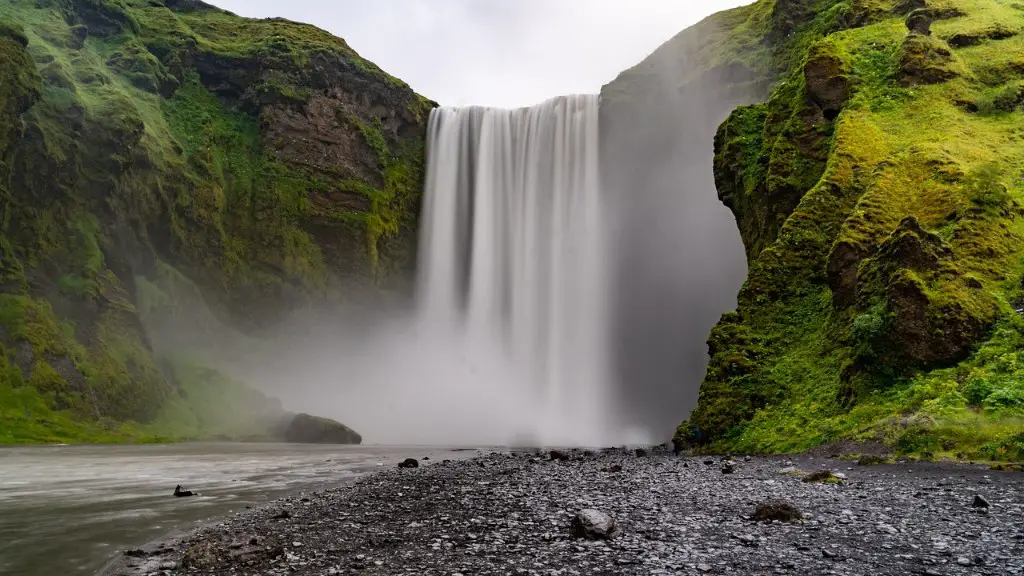The Nile River is the longest river in the world, stretching a whopping 4,258 miles (6,853 km) through northeastern Africa. The Nile winds its way through eleven countries: Tanzania, Uganda, the Democratic Republic of the Congo, Kenya, Rwanda, Burundi, Ethiopia, Eritrea, South Sudan, Sudan, and Egypt. It also flows through two autonomous regions in Sudan, South Kordofan and Blue Nile, as well as the disputed territory of Abyei.
The Nile River is one of the most important rivers in the world and has provided life and livelihoods for the people living in its vicinity since the time of prehistory. It is an important source of freshwater for the region and helps to support the agricultural industry. The Nile River is also an important source of hydroelectric power. It is estimated that almost half of the river’s hydroelectric potential is still untapped.
The importance of the Nile River is evident from the history of the countries through which it flows. In ancient Egypt, it was the main source of life, providing the irrigation necessary for their agricultural success, which in turn provided a strong economy. In more modern times, the river remains vitally important to the life of the region and its inhabitants. In Sudan, for example, the River provides a transport link between the capital city of Khartoum and Lake Nasser, which were two of the most important places in ancient Egypt. The River is also an important source of income for many of the countries in the region, with tourism being particularly popular in Egypt and Sudan, both of which are home to a number of attractions along the Nile.
Experts consider the Nile River basin to be one of the areas of greatest water security risk in the world, as the countries and regions through which it flows often experience water shortages. This can be attributed to a combination of factors; for example, changes in the climate have caused a decrease in the amount of rainfall in the region, while other factors, such as population growth, have put further strain on water supplies. As a result, water management strategies have had to be implemented in some of the countries that the Nile River runs through in order to ensure a sustainable use of its resources.
The potential for the Nile River to provide a better future for the countries that it flows through is immense. With improved water management practices, the countries of the region could benefit significantly. For example, improved water access could provide communities with better health and education opportunities, while improved infrastructure could help to increase economic development and reduce poverty. Ultimately, a sustainable future for the Nile River could unleash a wave of positive changes that would benefit the entire region.
Water Crisis in Nile Basin countries
Despite the Nile River running through eleven countries, in reality, the countries at the source of the Nile have much less access to its resources in comparison to those downstream. While the countries downstream, like Egypt, are estimated to have access to 85 percent of the Nile waters, those upstream like Ethiopia, Uganda, and South Sudan have only access to 15 per cent. As a result, those countries in the Nile Basin face an increasing risk of water scarcity and water insecurity. This has been further exacerbated by the increasing population growth and the more frequent and intense periods of drought in the region.
In order to address this water crisis, there has been an increasing focus on improving water management in the countries of the Nile Basin. This is being done through a variety of initiatives, such as water harvesting and irrigation systems, improved river infrastructure, conserving water resources through greater efficiency, and better monitoring of water usage. These initiatives are being undertaken by both local and international organizations in the countries of the Nile basin, in order to ensure that the region has access to a secure water supply.
The countries of the Nile Basin must take this water security issue seriously in order to ensure that the Nile River can continue to provide a sustainable source of life for years to come. Without proper water management, countries could find themselves in a situation where there is not enough water to sustain the local population, leading to greater poverty and food insecurity. If the countries in the Nile Basin can work together to put in place effective water management strategies, it could provide the region with a healthy and vibrant future that is filled with hope and prosperity.
Environmental Protection of the Nile Basin’s Ecosystems
The Nile River is home to a diverse range of ecosystems and species, many of which are threatened by human activities and climate change. The countries that the Nile runs through contain many protected areas, such as the Aswan Dam Reservoir, the Sudd Estuary, the Ilemi Triangle, and the Kagera National Park, in order to ensure the conservation of the fragile ecosystems and species.
In addition to protected areas, there have been efforts made to conserve the river’s biodiversity through a number of projects and initiatives, such as the Nile Basin Initiative, which is a regional organization made up of countries of the Nile Basin. The Nile Basin Initiative was created in order to promote cooperation between the countries of the Nile Basin in order to improve water management, manage shared resources, and protect the environment. As part of this initiative, there have been a number of projects set up in the region, such as the transboundary wetlands project and the Nile River Basin Integrated Water Resource Management project, which are aimed at conserving the river and its species.
In order to further protect the ecosystems and species of the Nile, it is also important to ensure that development activities take into consideration the environment and its needs. This could include things such as regulating fishing practices and controlling tourism to ensure that the environment is not disrupted. It is also important to ensure that the water is properly managed, as this will ensure that sufficient freshwater is available for irrigation, energy, and other needs.
The conservation of the Nile River’s ecosystems is of vital importance for their biodiversity, as well as for their utility in providing livelihoods for those communities that depend on the river. If measures are taken to ensure that the environment is protected, it could provide an invaluable resource for many of the countries that the river runs through.
Cultural Influence of the Nile River
The Nile River has been a source of cultural and spiritual influence for many of the countries that it runs through since ancient times. In ancient Egypt, the river was seen as a symbol of life, fertility, and rebirth, and was venerated by the people who lived along its banks. In Sudan, the River has been a major source of trade and cultural exchange, with its inhabitants being considered the “people of the river”.
Today, the importance of the Nile River to the culture of the region is still evident. In Ethiopia and Sudan, it is still an important source of water for irrigation and drinking, while in Egypt, it is still an important source of symbolism and spiritual power. The cultures of Nile Basin countries, such as Egypt and Sudan, are still heavily influenced by the river, from the literature and music to the traditional customs and folklore.
The Nile River is also an important source of inspiration for artists and writers, with authors writing about the river’s culture and mythology, and painters depicting its beauty in their work. In this way, the Nile River continues to play an important role in the cultural identity of the countries that it passes through.
Nile River and its Contribution to Global Tourism
The Nile River is considered to be among the world’s most iconic rivers and the countries that the River passes through are among the world’s most popular tourist destinations. Egypt, in particular, draws millions of tourists every year due to its rich history, grand monuments, and beautiful scenery, which are all made possible by the River. This has created an important source of income for the country, as the money generated from tourists helps to support the country’s economy.
In addition to Egypt, Sudan, Ethiopia, and Uganda are also popular tourist destinations due to their rich culture, beautiful landscapes, and unique wildlife. While each country offers its own unique attractions, there are several attractions that are shared and appreciated by visitors, such as the Great Pyramids of Giza, the Sudanese Pyramids, the Blue Nile Falls, and Lake Nasser. All of these attractions are made possible by the Nile River, and it is estimated that billions of dollars are spent on tourism in these countries each year.
The Nile River’s contribution to global tourism can also be seen in how it is used as a transport route. Cruise ships often take visitors up and down the river, allowing them to take in all the sights and sounds of the region in a single trip. This type of tourism is becoming increasingly popular, as it provides tourists with an immersive experience and the opportunity to explore the unique culture, history, and beauty of the region.
Conclusion
The Nile River is an integral part of the countries that it passes through, both in terms of the lives of the people who depend on it and the environment that it supports. It is an important source of freshwater, hydroelectric power, and income for many of the countries in the region, and its contribution to global tourism is immense. In order for the Nile River to continue to support these countries and their inhabitants, it is important that a concerted effort is made to ensure the sustainable use of its resources and the protection of its delicate ecosystems.




